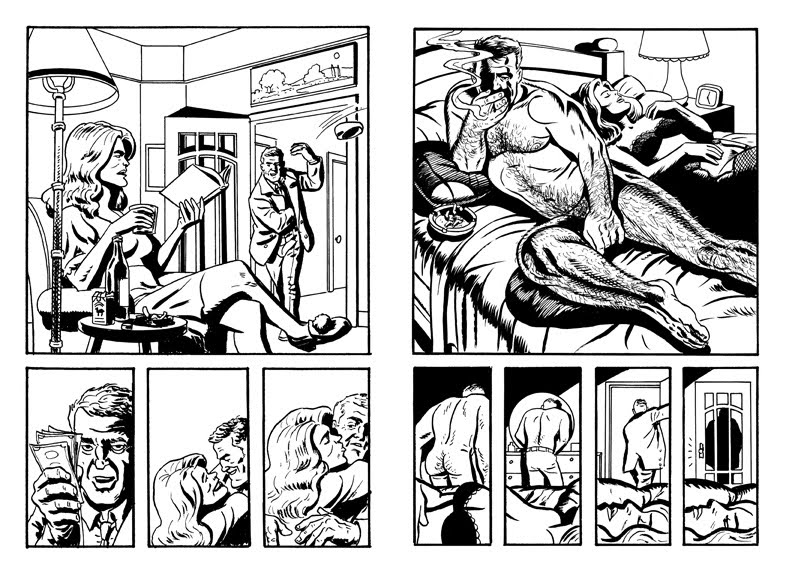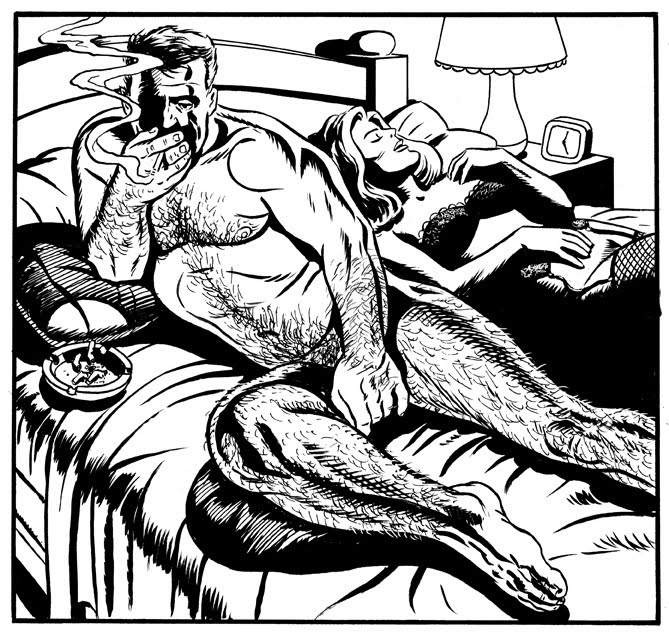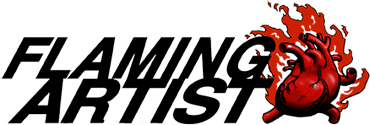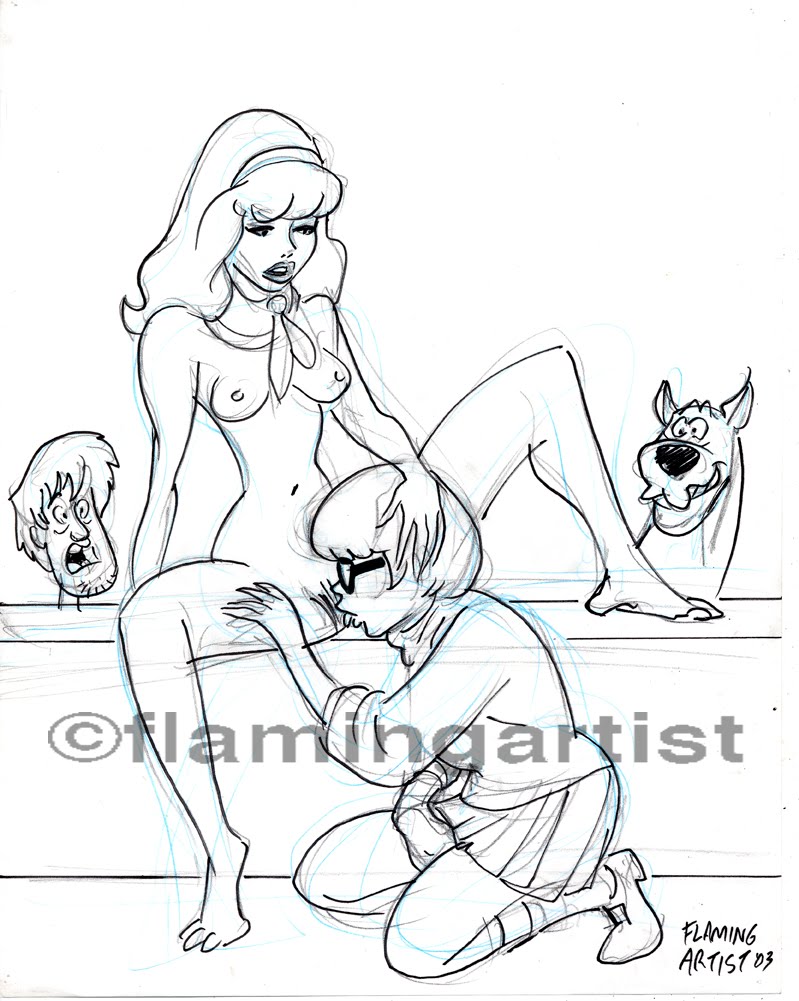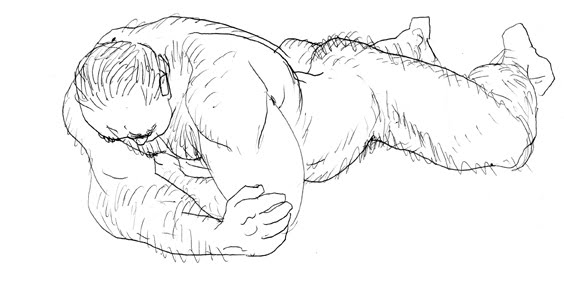Page 12/13 will be used to explain the creative process for the graphic novel. First I’ll show you the script, then the steps in turning it into graphic novel form.
First comes the script. This is a printout from the relevant page of Andersen Gabrych’s script. Andersen is an up and coming comic book writer (Batgirl, Batman, the Demon), travel writer for LA Confidential Magazine and actor (“Hit and Runway”, “Another Gay Movie”, “Another Gay Movie 2”)
PAGE EIGHT
Panel 1
Loretta hands him the hanky. As he drinks the coffee.
Loretta: Do it yourself then, tough guy.
Panel 2
TENSE SILENCE as Loretta smokes and Frank wipes off his face.
Panel 3
Loretta finally speaks, but doesn’t look at Frank.
Loretta: You didn’t come home last night.
Panel 4
A sudden KNOCK provides a relief for both and their heads turn toward the door.
SFX: KNOCK, KNOCK!
PAGE NINE
Panel 1
The door opens to reveal MAGDA, an adorable little middle-aged Mexican woman. She peaks wide-eyed around the door as she opens it.
Magda: Hello? Senor Grissel?
Panel 2
Frank stays seated. Loretta goes to welcome Magda in.
Frank: Who’s askin’?
Magda: I am Magda. I am look for my daughter. Carmen.
Frank: Well, Magda. She ain’t here.
Magda: No. No. She is go runaway.
Panel 3
Magda looks up at Loretta.
Loretta: Here, please sit down.
Magda: Gracias. You are Senora Grissel?
Panel 4
Loretta’s eyes turn to slits.
Loretta: No. I’m just the secretary.
Panel 5
Magda hands Frank a photograph.
Magda: I bring photo. See?
Frank: Lemme see.
—————————–
I adapted the script, roughing out each page on copy paper, rendering my concept of word balloon and blurb/display copy placement. I then copied both the editor and the writer for their suggestions/ mandates.
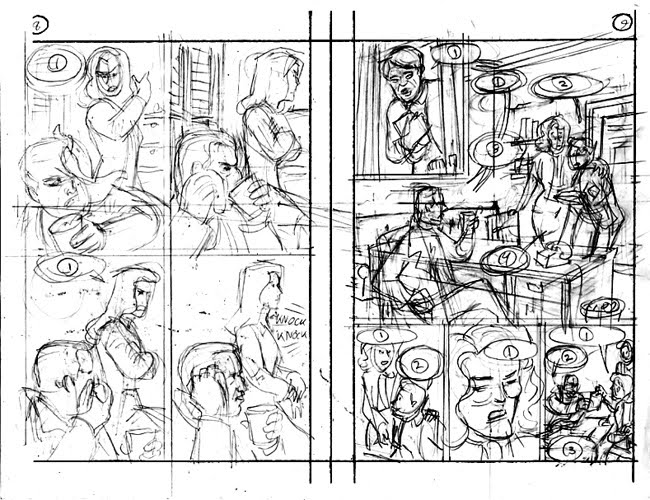
———————-
Next is the first pass at finished art, done at the original, smaller size.
Initially, I had been trying for a loose, gestural look. For instance, I opted not to use a straightedge while inking backgrounds, emulating cartoonists like Milton Caniff (“Terry and the Pirates”, “Steve Canyon”), Jordi Bernet (“Torpedo 1936”), and Tony Salmons (“Vigilante”, “The Strange Adventures of H.P. Lovecraft”). I discovered, working in the smaller format, that my results were more sloppily crude than successfully gestural. My editor, Bob Schreck, was also unhappy. We agreed that the remaining 100 pages would be done at the more traditional 14″ x 9″ size. This would achieve a tighter, slicker look.
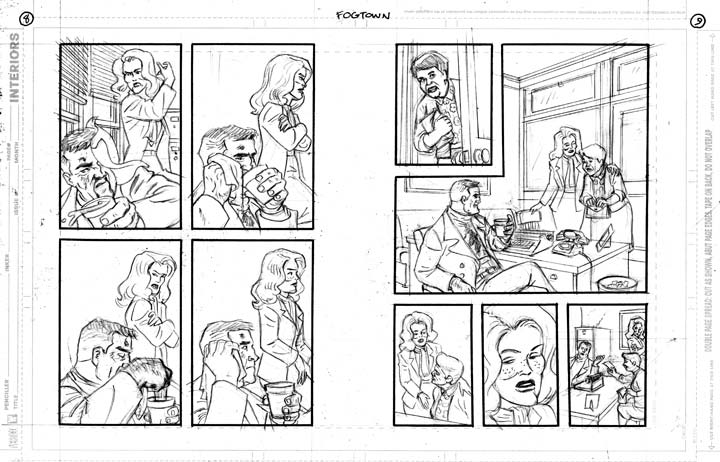
—————————————–
Bob had extensive revision notes on the first 70 pages. I elected to do the alterations in the larger 10″ x 15″ format and composite the fixes using Photoshop. I delivered the finished pages to DC via the Internet, uploading the finished files to DC’s FTP site.
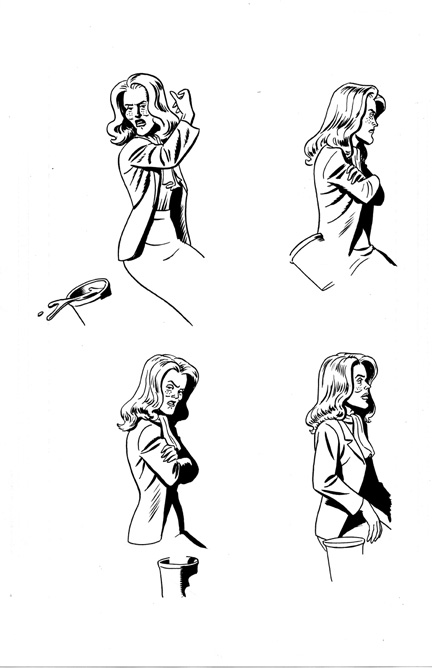
———————————
The production process for mainstream comics is typically an assembly line. One person executes the script, and then various other people provide the pencil artwork, the inked artwork, the lettering, and the coloring (or, in this case, the gray toning). The editor will assign the various chores as s/he feels fit; it’s rare that one artist or creator gets to do all of them on the same project.
In this case, I was unhappy with the original lettering when Bob sent me the rough lettering pass, in early ’09. I sent a detailed, page by page listing of all the mistakes and lapses in aesthetic judgment I saw.
Bob left the project soon after and was replaced by the new editor, Will Dennis. Will sent me the pre-publication galley in early ’10. All the elements of the lettering I had objected to were unchanged. I re-sent my critique to Will and he gave me permission to re-letter the display and SFX lettering (I didn’t have the time or ability to re-do the body (balloon) copy and had to let that go). I was not comfortable with Illustrator, the program of choice for letterers, so I hand lettered the re-dos and composited the fixes in Photoshop.

———————————
Now comes the final step before publication, where any mistakes can be caught and last minute changes call be made. The galley was the first time I saw the gray tones, which were executed by Rivkah. Although she was chosen by the second editor on the book, Brandon Montclair, I was happy with her work. She was surprisingly sympathetic with what I was trying to achieve with lighting and mood, and even imitated my brush strokes, leading to a very seamless look. She also avoided glow effects, self-color lines and other excesses allowed too easily by the computer, for which I am extremely grateful.
This page is an example of what I changed from the original lettering pass.

